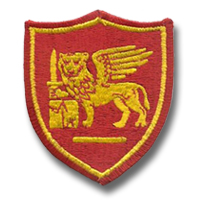If you do
NOT see the Table of Contents frame to the left of this page, then
Click here to open 'USArmyGermany'
frameset |
Allied Forces Southern Europe
SHAPE
Looking for more information from military/civilian
personnel assigned to or associated with the U.S. Army
in Germany from 1945 to 1989. If you have any
stories or thoughts on the subject, please contact me . .
|
|
|
|
|
| |
| History |
|
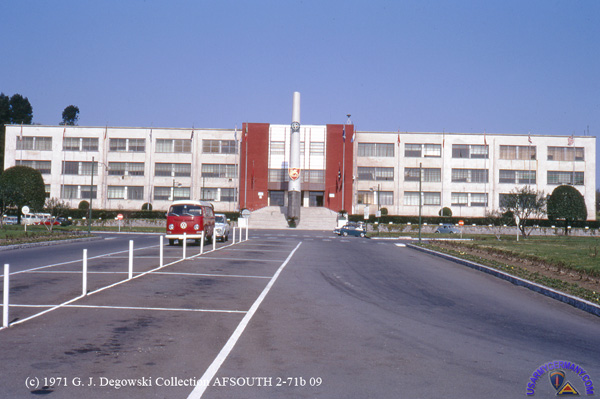
Headquarters, Allied Forces Southern Europe, Bagnoli, 1971 (Greg Degowski) |
|
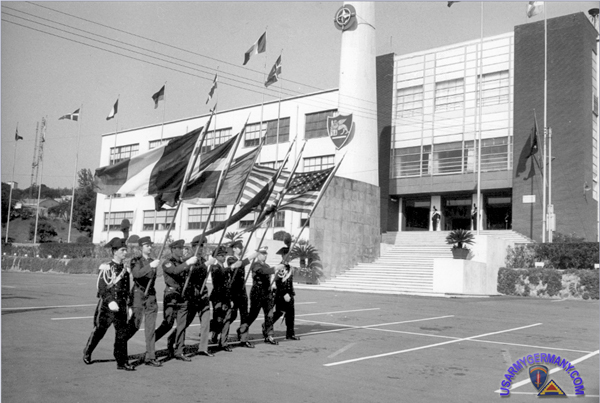
Headquarters, Allied Forces Southern Europe, Bagnoli (Naples)
|
|
| 1951
- 2004 |
| (Source: AFSOUTH, 1951-2004: OVER FIFTY YEARS WORKING FOR PEACE AND STABILITY by Franco Veltri; Mr Veltri was a NATO civilian member of AFSOUTH at the time this was written in 2004.) |
AFSOUTH
Soon after the formation of SHAPE in April 1951, the command recognized the urgent need to create regional organisations to facilitate development of local contingency plans, even if no military forces were at that time assigned to NATO.
In the same year, the three European Regional Planning Groups shifted their responsibilities to newly established major subordinate commands:
  Allied Forces Southern Europe (AFSOUTH) Allied Forces Southern Europe (AFSOUTH)
  Allied Forces Central Europe (AFCENT) Allied Forces Central Europe (AFCENT)
  Allied Forces Northern Europe (AFNORTH) Allied Forces Northern Europe (AFNORTH)
Respectively, these would have been commanded by U.S., French and British officers.NATO planners, from the beginning, had no doubts that adequate attention was to be paid to the southern flank; not only to comply with the pledge to defend the southern member countries, but also to protect the vital sea line of communication upon which Europe has always depended. In addition, the southern flank was a barrier against Soviet expansionism towards Africa, the Middle East and the Persian Gulf.
European interests in Northern Africa and the Middle East were particularly strong. The United States and Canada also were dependent upon the Mediterranean for shipping from the Indian Ocean, the Far East and, particularly, for the oil traffic from the Persian Gulf. Some of the Allies had a military presence in Morocco, Tunisia, Algeria, Libya and Egypt. However, the area of application of the Atlantic Treaty has never included the North African littoral. The control and defence of the Algerian Department of France, considered French homeland until its independence in 1962, remained a responsibility of France. There were therefore plenty of reasons for creating a specific command to be in charge of such a complex and different area.
FORMATION OF AFSOUTH
In May 1951 Gen. Dwight D. Eisenhower wrote a letter to the Standing Group proposing the appointment of U.S. Adm. Robert Bostwick Carney as Southern Commander, with headquarters in Italy. As a consequence, Naples was a quite obvious choice, in order to allow Carney - who had the national duty of Commander-in-Chief, U.S. Naval Forces Eastern Atlantic and Mediterranean, with headquarters in London - to use fleet support for his new headquarters. In a press conference in Paris, on 19 June 1951, Gen. Eisenhower formally announced the appointment of Carney, with effect the same day.
A communiqué' stated that the location for his allied headquarters was to be agreed upon by Italian authorities. His mission, as Commander-in-Chief, Allied Forces Southern Europe (CINCSOUTH), was to defend Southern Europe; but without interfering with the Western Mediterranean commanders, nor with Greece, Turkey and Yugoslavia while initiatives were in progress to consider admission of these countries into the Alliance. Adm. Carney would have also assumed duties as Commander, Allied Naval Forces Southern Europe (COMNAVSOUTH), with a separate staff.
Carney's area of responsibility, therefore, extended from the Western Mediterranean - except the Balearic Islands and Malta - to a line in the Adriatic from Trieste (Italy) to Cape Matapan and to the Tunisian waters. Responsibility to protect the sea lines between France, Corsica and Algeria remained with the French. Similarly, the Italian Navy was in charge of protecting the communications between Italy and her islands.
With the appointment of CINCSOUTH, two other nominations were announced: Italian Army Lt. Gen. Maurizio Lazzaro De Castiglioni was to be Commander, Allied Land Forces Southern Europe; and Maj. Gen. David M. Schlatter, USAF, Commander, Allied Air Forces Southern Europe. Both would be subordinated to Carney. The same communiqué stated that the above decisions had been taken "in the light of the traditional interests and responsibilities of France, Italy and Great Britain, and without any prejudice about the institution of a command system which may be adopted for the whole Mediterranean theatre."
Adm. Carney flew to Rome, where he met the Defence Minister, Mr. Randolfo Pacciardi, and the Foreign Minister, Mr. Carlo Sforza. The morning after, 21 June 1951, he raised his flag on the U.S.S. Mount Olympus, at anchor in the Bay of Naples. During a brief ceremony on board his flagship, Carney read the letter of appointment received from Gen. Eisenhower. He concluded by saying, "Our duty is to protect and safe-guard freedom. We accept this duty with confidence, well conscious of our responsibilities." A twenty-one gun salute from the ship was echoed by the same number from the Italian Navy artillery, marking the marriage between Naples and AFSOUTH -- a marriage blessed by the Italian Premier, Alcide De Gasperi, on whom Carney paid a call the same day.
Adm.
Carney had, as he said, great responsibilities, but no organisations to accomplish his mission. The only force available to him for combat was the U.S. Sixth Fleet, put under his operational control as COMNAVSOUTH. Together with his two designated subordinate commanders, his first task was to build a structure able to co-ordinate and control also the other available forces: what remained of the Italian armed forces and some French forces.The first stone laid in his organisation was the activation, in Verona, of the Headquarters Allied Land Forces Southern Europe (LANDSOUTH), on 10 July 1951. Some three infantry divisions and three brigades were the only forces available to this command to defend northeastern Italy.
Next was the air headquarters, Allied Air Forces Southern Europe (AIRSOUTH), set up in a temporary facility in Florence, on 5 August. Italian, American, French and British personnel staffed this headquarters. Forces available included an Air Tactical Group of the Italian Air Force, equipped with F-47 Thunderbolts and F-51 Mustangs. The group was later dissolved in November 1951 and the 56th Tactical Air Force was established in Vicenza, under the operational control of AIRSOUTH. Its strength consisted of 132 aircraft.
Adm. Carney and his staff could not co-ordinate the growing organisation from the operational rooms of a ship. A temporary home - in an apartment building - was found in Naples, on the hill of Posillipo; and the headquarters opened on 1 September 1951. A symbol of the new Allied command was also selected, the "Lion of Saint Mark," the traditional symbol associated with the ancient Republic of Venice. At the flag dedication ceremony, later that year, Adm. Carney explained the reasons for his choice. "The insignia of the flag is that of the Lion of Saint Mark, a design old and honoured in the Mediterranean, with the design of power - holding open 'the book of peace.’ However, the Lion has a sword poised, indicating that he is willing to maintain that peace."
|
| |
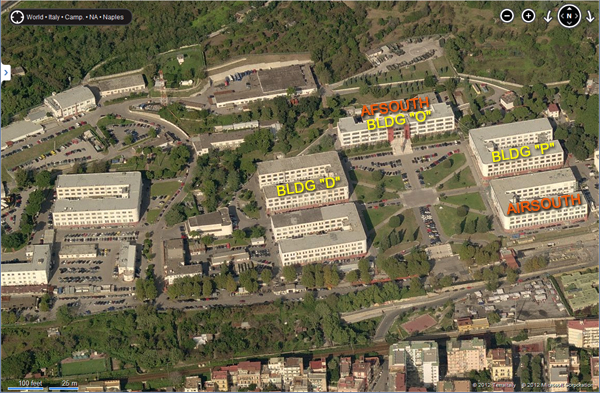
Bird's Eye View of AFSOUTH Post, Bagnoli (Naples) |
| |
From the new AFSOUTH headquarters it was possible to enjoy a view of the beautiful Neapolitan landscape, but that could not compensate for the limited dimensions of the building. During the following year a suitable facility for the permanent headquarters was identified nearby: a complex originally built in the Bagnoli district of Naples to provide a home for young people in need. The facility, built in 1930's, was occupied by the Italian War Ministry until 1942 when it was turned over to a Fascist Youth Organisation and, later, to the German troops until 1943. The Germans were replaced by the Allies from 1943 - 1945. Between 1946 and 1951 the facility was used by the International Refugee Organisation to house displaced persons. Very little of it remained in good shape, and it took nearly two years to renovate the facilities, which belong to a foundation of the Bank of Naples. Cost for the renovation was covered approximately one-third by NATO and two- thirds by the Italian Government. Relocation of AFSOUTH to Bagnoli started in January 1953, and the new complex was officially inaugurated on 5 April 1954, while celebrating the fifth anniversary of NATO, by Admiral William M. Fechteler, who had replaced Adm. Carney in August 1953. The first CINCSOUTH was Chief of US Naval Operations until 1955. He died on 25 June 1990.
GREECE AND TURKEY ENTER THE ALLIANCE
The first major change in the NATO posture in the Mediterranean was the welcoming of Greece and Turkey into the Alliance on 18 February 1952. By the terms of the basic treaty, this meant recognition that these two European states were "in a position to further the principles of the treaty and to contribute to the security of the North Atlantic area," which, despite its name, included the entire Mediterranean as well. The admission of Greece and Turkey extended eastward the boundaries of AFSOUTH to include all of the Mediterranean and Black Seas and Greece and Turkey landmasses.
On 8 September of the same year, a new land command was established for the eastern areas, the Allied Land Forces Southeastern Europe (LANDSOUTHEAST), whose headquarters were activated in Izmir (Turkey). The area of responsibility stretched from the Caucasus to the western shore of Greece and provided security for 35 million people. A subordinate headquarters, the Thessaloniki (Greece) Advanced Command Post was also activated. The first Commander was Lt. Gen. William G. Wymann, U.S. Army. Both Greece and Turkey committed most of their armies to NATO. The six Southern Region Nations (France, Greece, Italy, Turkey, U.K. and U.S.) were all represented on the LANDSOUTHEAST staff.
The following year, on 14 October 1953, the 6th Allied Tactical Air Force was also established in Izmir, commanded by Maj. Gen. R.E.L. Easton, USAF, and responsible to AIRSOUTH for the air defence of Greece and Turkey. Three national air organisations were assigned to this subordinate command: the Turkish 1st and 3rd Tactical Air Forces, and the Royal Hellenic 28th Tactical Air Force. In terms of actual forces this meant two Greek wings and four Turkish fighter-bomber groups of F-84 aircraft, plus some B-26A Mosquitoes.
While the Land and Air Commands were building up their own internal organisations, there was still some confusion about Adm. Carney's maritime responsibilities. As mentioned earlier, he was also in charge of the Allied Naval Forces Southern Europe (NAVSOUTH), a command which was not yet independently operational. It was not until December 1951, when French and Italian sub-area naval commands were established in the Mediterranean, that Allied planners found it necessary to set up a separate naval headquarters.
During 1952, several factors influenced the evolution of the allied maritime structure in the Mediterranean. These included: the presence of significant British naval forces in the Mediterranean (these forces were not under Adm. Carney's command but it was assumed they would be available if and when an emergency arose); the accession of Greece and Turkey to NATO; the assumption of Command of the British Mediterranean Fleet by Adm. Louis Mountbatten and the relinquishment of command as SACEUR by Gen. Eisenhower. By the end of 1952, it was proposed to appoint an Allied Commander-in-Chief, Allied Forces Mediterranean (AFMED). He would be a British officer, reporting directly to SACEUR. Another naval command, consisting of the NATO earmarked U.S. Sixth Fleet, would be under an American Adm., responsible to AFSOUTH.
The Mediterranean was divided into areas for the exercise of those functions which were of a local and national nature. The commanders of those areas were responsible to AFMED but were to be under national authorities for parallel national tasks. Agreements concerning the establishment of a French area in the Western Mediterranean and an Italian area covering the approaches to Italy were to remain valid, but within AFMED instead of AFSOUTH. A Gibraltar area was also established, as well as areas in the Central and Eastern Mediterranean.
The AFSOUTH commander remained responsible for the land and air forces, and for the Sixth Fleet, in the new capacity of Allied Naval Striking and Support Forces Southern Europe (STRIKFORSOUTH) whose headquarters was established in Naples on 15 March 1953. The new structure became operational on the same day of the activation in Malta of AFMED, commanded by Adm. Mountbatten, directly subordinate to SACEUR, and charged with the conduct of naval operations - other than those of STRIKFORSOUTH - in the Mediterranean and Black Seas. AFMED was also charged with responsibilities for mine warfare, submarine and anti-submarine operations in this area. At the same time, Adm. Carney was relieved from his NAVSOUTH duties. Finally, air defence remained a responsibility of AIRSOUTH over the whole Mediterranean area.
AIRSOUTH headquarters was co-located with AFSOUTH in May 1953. Its organisation was already well defined, with the Sixth Allied Tactical Air Force (6ATAF) being operational and a similar structure being built in Italy. AFSOUTH included at that time four principal subordinate commands: one air, two land and one naval.
A next important event for the Alliance was the accession of Germany in 1955, almost coinciding with the creation of the Warsaw Pact. The 5th Allied Tactical Air Force (5ATAF) was established in Vicenza, Italy on 1 January 1956, completing the missing link between the 4ATAF in Central Europe and 6ATAF in the southeast.
Finally, to support land defence in the region, the U.S. agreed to establish a task force of some 10,000 personnel in Northern Italy. The U.S. Army "Southern European Task Force" (SETAF) was born on 25 October 1955. Initially located at Camp Darby, a main logistic base located near Livorno, the SETAF headquarters was moved to Verona and eventually to Vicenza; while the strength of the force was significantly reduced with the Italians receiving the equipment from the disbanded American units. Since 1973 an airborne battalion team has been stationed in Italy and SETAF assigned the mission of readying and deploying this units for Allied Command Europe employment, as part of its Mobile Force (Land).
EARLY DAYS OF THE COLD WAR
The year 1956 was full of events which significantly influenced the geostrategic situation in Europe. In February, the opening of the 20th congress of the Soviet Communist Party marked the beginning of the "destalinizations." In March, both Tunisia and Morocco became independent. In July, the President of Egypt Gamal Abd El Nasser nationalised the Suez Canal. In October, the Hungarian people's rebellion started, repressed by a Soviet intervention. Almost simultaneously the Suez crisis was escalated by the Israeli "Sinai campaign" followed by the French-British intervention, which was not approved by the U.S. The Alliance's solidarity seemed to reach the lowest level just as the Cold War was reaching a peak.
The following years saw a growing Soviet political penetration in the Mediterranean, while Western influence in North Africa and the Middle East was noticeably reduced. Cyprus became independent in 1960, followed by Algeria in 1962. Although the discussions between President Eisenhower and Mr. Khrushchev at Camp David in September 1959 had seemed to open the door toward further negotiations, the downing of a U.S. U-2 aircraft over Russian territory caused the next summit to abort. The construction of the Berlin wall in 1961 was a further contribution to increased tension.
The Allies' response to the deterioration of the Berlin situation was an increased allied solidarity and the creation of an Allied Mobile Force (AMF) from units supplied by six different countries. It consisted of a land element of five battalions and an air element of four fighter-bomber attack squadrons. The size of the force may not have been as impressive as its political meaning was and still is. It was the image of the Allies' resolve, to face together any aggression, which the deployment of the AMF to a crisis area might well have demonstrated. Five out of the seven areas identified for possible deployment of the AMF were in the Southern Region.
The end of 1963 was marked by serious disorder among the Greek and Turkish communities in Cyprus. The NATO Council made every effort to preserve friendship between the two members of the Alliance. In March 1964, the United Nations decided to send a peacekeeping force to the island. In August Greece withdrew its personnel from NATO Headquarters in Izmir. Another Mediterranean island was also a focus of attention in the region. On 21 September 1964, Malta gained independence from the U.K., bringing into question the status of the AFMED headquarters on the island. The continued legal status of the installation was solved over a year later, in a joint statement of the NATO Council and the government of Malta.
THE FIRST REORGANIZATION
Since 1952, AFSOUTH had been composed of an integrated staff from six nations: France, Greece, Italy, Turkey, the United Kingdom and United States. A change became necessary after an official announcement was made by the French government on 29 March 1966: French personnel would withdraw from the NATO integrated military structure, assignment of French forces to international Commands would terminate and all the NATO or allied units or installations would be transferred from French territory by 1 April 1967. The NATO Council, therefore, had to make appropriate modifications to the Allied organisation. As France continued to be a member of the Alliance, a new forum was established to discuss military questions in which France would not participate: the Defence Planning Committee. SHAPE Headquarters was transferred to Belgium, along with the NATO Headquarters. The Central European Command was hosted by the Netherlands, with a German commander, while Italy was asked to provide a new home for the NATO Defence College.
France's withdrawal from the integrated military structure was yet another factor leading to a reorganisation of AFSOUTH. The overall picture of the Mediterranean was totally different from the one which had framed Adm. Carney's efforts. Western influence over the African littoral countries had dramatically decreased. Western forces which had been present in some of these countries had been withdrawn. The political orientation of some littoral countries had shifted towards the left. As a result of the French withdrawal from the integrated military structure of the Alliance, the Southern Region had lost the use of the NATO naval installations at Toulon and Mers-el-Kebir. All these changes occurred just while the Soviets were succeeding in politically and militarily penetrating into the Mediterranean area.
The first permanent deployment of Soviet naval units to the Mediterranean dates from 1964, when four or five units started to show the red flag on this sea. This presence rapidly grew to a level of 40 to 50 units during the following years. At the same time, the Soviets increased their effort to influence the entire area; linking themselves to some littoral countries either through co-operation treaties, or by large-scale sales of military equipment.
NATO military planners were well aware that the allied military structure in the southern flank was no longer adequate to face either the increased threat or the new political and military situation in the Mediterranean basin. In addition, the two Major Commands in the area had overlapping responsibilities. AFSOUTH was responsible for the critical southeastern maritime zone where adjacent land and air operations were under its subordinate commands - LANDSOUTHEAST and 6ATAF. In the same area, naval operations were conducted by commands subordinated to AFMED. Another problem was the proliferation of subordinate commands which increased the need for effective co-ordination.
It was not until 1965 that the Military Committee agreed to the following proposals made by SACEUR on the command structure and boundaries in Southern Europe and in the Mediterranean/Black Sea area:
- Disestablishment of AFMED Headquarters.
- Reestablishment of the Headquarters Allied Naval Forces Southern Europe (NAVSOUTH) under an Italian Adm.
- Reorganisation of the areas assigned to the subordinate commands (i.e. the command boundary between the Eastern and Central Mediterranean area was modified in order to coincide with that of 5ATAF and 6ATAF).
- Redesignation of the maritime U.S. Fleet Air Wing Mediterranean (U.S.FAIRWINGMED) command as Maritime Air Forces Mediterranean, to assume responsibility for all assigned maritime patrol aircraft in the Mediterranean. An international staff was to be assigned to this new allied headquarters, to be activated in Naples.
- Designation of the U.S. Commander Submarine Flotilla 8 as Commander, Submarines Mediterranean (COMSUBMED), in addition to his wartime responsibilities as Commander Task Force 442 (CTF 442); and the establishment of an international staff for this command to be co-located with the U.S. staff in Naples.
AFMED was deactivated on 5 June 1967. AFSOUTH became the only Major Subordinate Command in the South. NAVSOUTH was reactivated on the same date, in Malta; and the Commander, Adm. Luciano Sotgiu, Italian Navy, became a principal subordinate commander to AFSOUTH. By the following August, the NATO Defence Planning Committee had approved the reorganisation of the Southern European Command, as proposed by the Military Committee. However, by the time the bureaucratic procedure put into effect the original proposals of 1965, new changes affected the military posture in the area. In addition to the announced withdrawal of French forces from the integrated military structure, the United Kingdom decided to reduce her military presence in the area. And, on Libyan request, the U.S. agreed to withdraw its forces from the important air base of Wheelus Field. The very day AFMED was deactivated, the long-simmering Arab-Israeli conflict sparked a major crisis in countries bordering on its area of responsibility: the "Six Day War."
SOVIET PRESENCE INTHE MEDITERRANEAN
That was the first opportunity taken by the Soviets to demonstrate their willingness to influence major events in the area by the use of military power. During that crisis the Soviet Mediterranean Squadron numbered up to 70 units, some of which were in Port Said and Alexandria, to prevent Israeli attacks against those ports. The Cold War was getting even colder. The invasion of Czechoslovakia in August 1968 contributed to the lowering temperature. For the Mediterranean it was the prelude to Albania renouncing its membership of the Warsaw Pact. Late that year, the MARAIRMED Command was activated in Naples to improve NATO surveillance in the Mediterranean. The Alliance's concern for the never-ending Soviet penetration, by any means, in the Mediterranean basin was reflected in this recognised need for increased vigilance. NATO ministers instructed the Council in permanent session to keep the situation under close review. In the framework of measures studied at a Reykjavik meeting the previous June, the NATO Defence Planning Committee approved, in May 1969, the future establishment of a Naval On-Call Force Mediterranean (NOCFORMED). This maritime force, like the AMF for land and air, was to play an important deterrent role by showing the Allies' solidarity and their determination to put their forces under one flag. Assigned to NAVSOUTH, the On-Call force was activated 43 times between 1970 and 1991, when it was decided to replace it with a permanent force. It initially comprised up to five frigates or destroyers.
THE MEDITERRAEAN, A SEA OF CRISIS
A change in Malta's foreign policy was the origin of a major change in AFSOUTH's organisation. Acceding to a request by the Maltese government and following an Italian invitation, NAVSOUTH was moved to Naples in 1971, to facilities on the little island of Nisida previously occupied by the Italian Air Force Academy. Notwithstanding the withdrawal of the headquarters from Malta, NATO signed a seven-year agreement with that government on the use of certain facilities.
Another period of serious tension in the Mediterranean made evident the need for NATO Allies to keep a close watch on events which, even if not in the area covered by the Treaty, were taken by the Soviets as opportunities for military build-up. During the Yom-Kippur War, in October 1973, Soviet Navy units in the Mediterranean were doubled, reaching a peak close to l00 units.
The oil price war that closely followed the end of the fourth Arab-Israeli conflict was a further factor for political instability in the whole area. Against this disturbing background, NATO Ministers had to stress once again the importance for the Alliance to maintain its defensive and deterrent capabilities.In July 1974 a coup d'etat in Cyprus and a Turkish military action on the island marked a serious crisis in Greek-Turkish relations. A new Greek regime eventually decided to withdraw its forces from the NATO integrated military structure. While the solution of the Cyprus problem, as such, was a matter for the United Nations; the Atlantic Council made every effort to bring about reconciliation between the two NATO allies.
The withdrawal of Greek forces from the integrated structure left the Southern Region's eastern commands with responsibilities over mainly Turkish Forces. It was therefore natural to reinforce the existing co-ordination between NATO and national chains of command, by assigning command responsibility to Turkish officers. On 30 June 1978, the Commanders of Allied Land Forces Southeastern Europe and the Sixth Allied Air Force, both U.S. officers, were replaced in Izmir by colleagues of the hosting nation. Efforts by the Allies to improve the dialogue between Greece and Turkey continued and Greek forces returned to the NATO integrated military structure in October 1980, as the result of a proposal developed by Gen. Bernard W Rogers, the Supreme Allied Commander in Europe.
The year before, NATO's Southern Region had to face a new problem, the expiration of the agreement on the use of military facilities in Malta. British forces had to move off the island and a compromise solution was found, thanks to an Italian mediation. Italy pledged to guarantee Maltese neutrality, while at the same time providing the island with economic assistance. Neutrality meant also denial of access of Soviet warships to Maltese shipyards. Only two years later, in l981, Malta signed an agreement with the Soviet Union for the use of the oil depots previously used by NATO countries. In 1984, while negotiating the renewal of the treaty with Italy, Malta signed an ambiguous agreement with Libya.
Despite the several crises which have affected the Mediterranean area since that time, for many years the Western Allies did not have any reason to further modify their common defensive organisation in the area. Improvements obviously were made, however, to maintain the necessary level of deterrence. Particularly significant has been the acquisition by NATO of the Airborne Warning and Control System. A force of 18 E-3A aircraft with its long-range airborne radars and the use of three forward deployment bases in the Southern Region covered the gaps in the air defence radar system. This was a significant improvement because the air threat had always been one of the most dangerous for the Southern Region.
Another significant change in the Southern Region's contribution to European defence was the deployment in Sicily of cruise missiles. In 1979 the Alliance had to realise that Soviet development of missiles such as the SS-20s and bombers like the nuclear-capable Backfire, were reinforcing the Warsaw Pact superiority in long-range nuclear forces. NATO adopted the so-called "dual track," to modernise her intermediate nuclear forces by deploying Pershing and cruise missiles and withdrawing a great number of older nuclear weapons. NATO also offered nations the opportunity to negotiate a verifiable agreement on armament reduction, which would have made the actual deployment of the new western missiles unnecessary. Italy, as well as other allied countries, accepted her share of the burden of hosting of some of these missiles. Since 1983, a part of this new deterrent arsenal was deployed in the AFSOUTH area, but this headquarters had no direct control over these weapons, eventually dismantled under the Intermediate Nuclear Forces (INF) treaty.
A sign of the changing times in the 1980s was the new growing threat posed by international terrorism. AFSOUTH itself was directly affected with the kidnapping of a senior officer of the LANDSOUTH staff, Brig. Gen. James Lee Dozier, in 1981. The Italian Police rescued Brig. Gen. Dozier 42 days later, but it was clear that an international escalation of terrorism was in progress.
This escalation eventually led to the U.S.-Libya confrontation in 1986. That confrontation included an event which in theory created the conditions for Italy to claim the application of the provisions of the North Atlantic Treaty, when SCUD missiles were fired with the improbable intent to hit a U.S. Coast Guard communication facility on the island of Lampedusa. Italy chose not to call for a NATO response.
The Alliance policy was to deem any terrorist action a threat against its citizens which may jeopardize democratic institutions as well as normal international relationships -- a threat which required a new type of allied co-ordination. This policy was a sign of the changing roles of the Alliance, gradually shifting towards broader transatlantic co-ordination also in matters not directly affecting common defence.
The line of determination always followed by the 16 NATO nations has not always been easy to maintain, but has paid in tremendous dividends. The Euromissiles dispute was a case in point. We now know that the political risks taken, at a moment of Alliance fragility, to continue the deployment of INF missiles was the winning card which caused the collapse of the Soviet long-term strategy. The international security situation, fostered by decades of NATO unity and Western economic progress - as compared to the internal Soviet economic drama - created the conditions for the Soviet withdrawal from Afghanistan in 1988 and Gorbachev's era of transition from confrontation to co-operation with the West.
The second half of the 1980's also saw some clear improvements in NATO's capabilities in the South. Spain became the 16th member of the Alliance and, even if not integrated into the military structure, started its military co-operation and participation in Southern Region exercises. These exercises, also strong catalysts for co-operation, started to often see participation by half of the NATO allies.
Eventually the improving co-operation with Spain led to the assignment (on 5 April 1990) of a Spanish Liaison Officer to AFSOUTH. There had also for years been a French Military mission - led by a Rear Adm. - and a Portuguese Liaison Officer.
During the 1980's, modernisation programs developed by all the regional countries significantly improved overall defence capabilities. Even though in several areas still years behind the Central Region in terms of modern forces, the situation was so improved that it allowed a Commander-in-Chief to suggest a "strategic leverage" role for the Southern Region. This referred to the pressure he would be able to exercise against the Southern Soviet Union, in the event of a Soviet aggression against Central Europe.
(Webmaster note: Mr Veltri goes on to cover the years post-Cold War up until 2004 when AFSOUTH was inactivated.)
|
|
|
| (Source: former AFSOUTH website, accessed July 1999) |
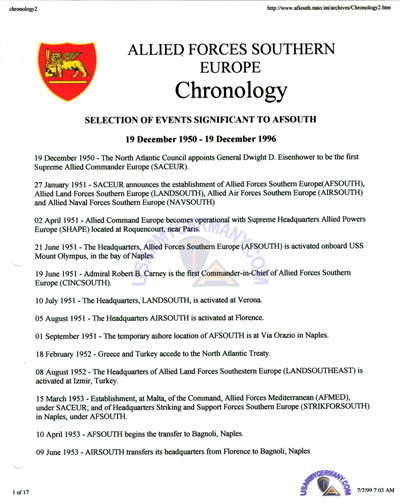
Chronology of significant events, 1950-1989 (1) |
| |
| (1) I am only presenting here the section on the 1950-1989 years which is within the scope of this website; I have all 17 pages - from 1950 to July 1997. If someone is interested in the period after 1989, you can contact me. |
|
|
| 1961 |
| (Source: Author's collection) |
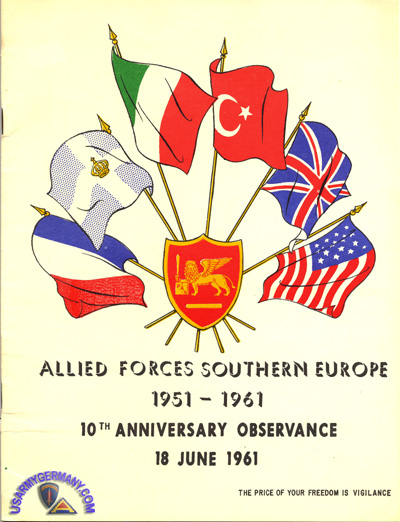
Pamphlet issued for 10th Anniversary Ceremony, 1961 |
|
|
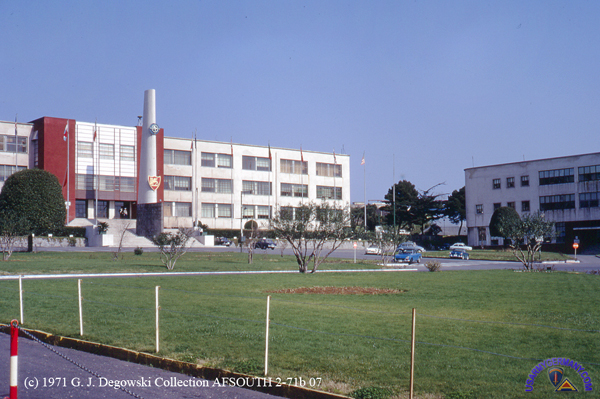
Headquarters, Allied Forces Southern Europe, Bagnoli, 1971 (Greg Degowski) |
|
| 1971 |
| (Source: Email from Greg Degowksi, Operations Division, HQ AFSOUTH, 1971-72) |
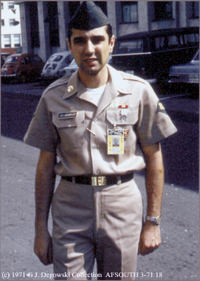
Sp4 Greg Degowksi, 1971
|
|
Tonight, I did a search for AFSOUTH and found the US Army Germany website and the history of AFSOUTH. I noted your interest in the history of the military in Europe and thought I would just share my short story.
Now that I have retired from the Army Reserve and my education job, I have been reminiscing about my service at AFSOUTH.
I have looked for an image of the pocket badge ("Lion of St. Mark"?) and the command history on the internet. I see that the command designation has changed and the headquarters will be relocated.
I was assigned to Operations Division from February 1971 to March 1972 as a classified document control clerk. As I recall, we were located on the second floor in the northwest corner of the building of the north east building. (If the headquarters building was on the north side of the square).
Photo (left): I am near Building D with Building P in the distance. I am in "Khakis", a comfortable uniform. I was STRAC! At least in my own mind. |
|
|
I was granted good fortune and was assigned to NATO Belgium instead of Viet Nam and then diverted to AFSOUTH. I arrived as an U.S. Army PFC, was quickly promoted to SP4 (perhaps because I worked at an international headquarters) and worked at document control. The mission had to do with "Cold War" defense and much of my work had to do with training inspection reports. I had an old heavy legal size file cabinet with a dial safe lock and a padlock to a bar through the drawer handles. That cabinet was always a mystery to me because I had to press a certain spot on the upper left side to activate the unlocking mechanism. How pressing a spot on such a heavy thing could make a difference I never understood.
While I was there, I was given the task of inventorying all documents held. Apparently that had not been done for a while. Since I wanted to go on leave during the Summer of 1971, I worked on the project some evenings before leaving. In the late evening one night, the concrete ceiling fell in on the area where my partner, the message control clerk, would work during the day. My work area was spared. I was told that the same thing happened in the Ops Director's (Enrico de Carlini, BG, ITA, I think) office and injured his secretary. During my college years, I had taken typing at the local high school, and my AIT (Advanced Individual Training) at Fort Knox, KY, was as a Clerk-Typist. So, I was somewhat familiar with a typewriter. (I still have one for addressing envelopes.) So, as it turns out, my clerk-typist typing work was typing "X" in little boxes on the document receipts. I presume such document control techniques have changed.
I visited Rome and Florence, and walked many miles in Naples, Bagnoli and Pozzouli and up to the Naval Support Center. I learned a little photography at the lab under the Headquarters building and bought a camera and an enlarger at the photo store next door. I remember taking the longest escalator I have ever seen from the top of (I don't remember the name of the area) Naples down to the train station. I remember that it was easier to call home via the U.S. Satellite than calling the Naval Air Facility at the Naples airport; I had to use the phonetic alphabet sometimes! I was in Rome for Easter of 1971 and in St. Peter's Square when the Pope drove from the entrance side and "almost" ran me over.
I was very fortunate to have my duty there at AFSOUTH. I was among many service members to receive an "Early Out" from President Nixon and I was released after only 19 months in the Army and 13 months at AFSOUTH. Before leaving, I was promoted to SP5 and awarded the Army Commendation Medal and the Good Conduct Medal. I really just did my job. I eventually joined the US Army Reserve, became a "Behavioral Science Specialist" (due to "Civilian Acquired Skill" as a school psychologist), the NCOIC of a neuropsychiatric section at a general hospital unit, eventually attained the rank of Sergeant First Class and was retired at 20 years and one day of service. Of course, my service in the Army and at AFSOUTH helped me grow up. And, gave me a sense of pride in my country, service to it and being a member of the military.
|
| |
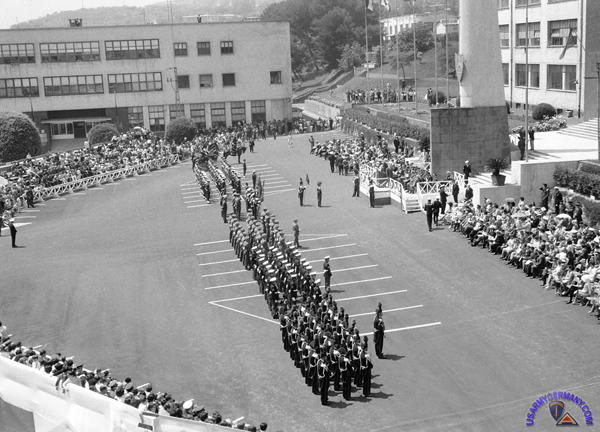
A ceremony at HQ AFSOUTH in 1971 or 1972 (Greg Degowski) |
| |
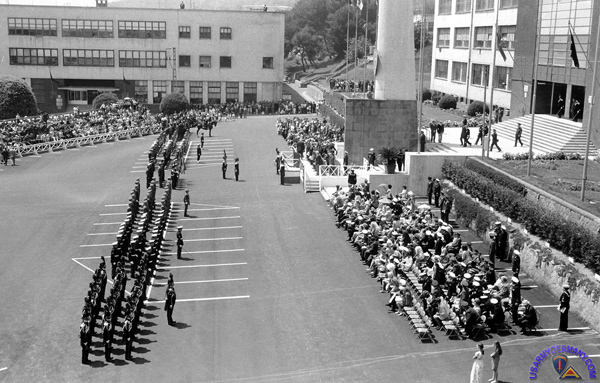
The two ceremony photos were taken from a window in the Admin Office, Operations Division |
| |
I have a few black and white negatives of the post buildings and a couple color photos of me, one at my desk (with my sophisticated document control apparatus...wooden card file)....and in khakis with the security badge with, more hair and no beard!
Oh, and one of my "primary" responsibilities was to set up the coffee urn at the end of the day so that the message control clerk could turn it on as soon as he reported for duty, an hour before all other staff came in. Every few weeks we went on a coffee cup hunt. It seemed that some staff would inadvertently leave them in the darnedest places. Amazing what grows in almost empty coffee cups after a few weeks! It almost sounds like a movie never produced. "The Green Fuzz that conquered AFSOUTH" And, duty at AFSOUTH started my descent into caffeine addiction.
Bagnoli seemed to be an unkempt town (the worst slum I ever saw) yet had the best pizza I ever tasted. It was cooked in an open hearth oven with real tomatoes, olive oil and what looked like ashes. It was like nothing I have had since.
I walked around a lot. I walked over the "mountain" (I am from Detroit. Anything above 100 feet high was a mountain. The Navy hospital was on Mt. Everest!) to Pozzouli to see if I could find Sophia Loren's house. No luck but I did find a Russian ship docked. It had all kinds of funny looking gizmos on different masts, etc.
I came to AFSOUTH with a few other fellows from Ft. Knox. An Army fellow who had been at AFSOUTH for a while took us to Rome a few weekends after we arrived. We walked around the city for a while and then heard a commotion. It was crowd coming our way. OH my gosh. They are carrying Communist flags. OH, what do we do? What did they teach us in Basic Training: Name, Rank and Serial Number? We high tailed out of there as any young and naive college kids would. We later learned that the communist party was pretty active in Italy. In fact, the Ops Division director, BG DiCarlini's driver was transferred because it was learned that his father was a communist. The Italian Army private was a nice "kid". As if I wasn't much older and wiser than him!
One day, the message control clerk and I did some office rearranging. It needed a new look. Understand, we both had desks, chairs, typewriters with tables, and a couple of file cabinets. Not much else in this bay about the size of my house today!! Anyway, we moved his "secure" classified message file cabinet a short distance and unbelievably left a trail of confidential messages on the floor!!!! After some college brilliant thinking, and a little looking in the bottom drawer, we found that this "secure" file cabinet had no bottom sheet of steel and messages overflowed the drawers and fell to the floor!!! Well, we reported this unacceptable condition which was received with disbelief and unexpected laughter. That file cabinet, sitting by itself with nothing next to it, apparently had not been moved during the time anyone there could remember!!!!
A Navy officer in the Ops Division was a pilot. He needed to keep up his flying hours and would invite enlisted members to go on flights for the fun experience. He invited me to fly to Turkey (I think). He flew out the Naval Air Facility at the Naples airport. It was a small prop plane, I think a sub chaser. Man, it shook and bounced and I could not hear myself think. We were out there over the Mediterranean or Adriatic for what seemed to be a head battering eternity, and then someone told me that they had engine trouble and turned back. Where's my Mae West when I need her? And, gee, I wanted one of those folding four loop rings that you could "only" get in Turkey, too.!!!! But, not enough to go on another flight!!!
OH YES,, I forgot a major tradition there. Understand that the barracks (in the north west building, west of the HQ) was used by all U.S. services and the Navy, of course, was host. When it became public knowledge that someone had orders to leave AFSOUTH, especially for "release from active duty", the service member became a "short-timer". In recognition of his/her "shortness" (there were very few females there at that time, except for a Marine staff sergeant.), a special greeting was enforced: "Short!". The required reply was "Short!" As the prescribed period of maybe two weeks progressed, the octave of the reply went higher until finally it was so high, it sounded more like a squeak!
Speaking of the Navy as the host, their mess hall had the greatest food! Those corn fritters were out of this world. Army Basic training took off the pounds and the Navy mess put them back on.
I got to know a few Marines who acted as sentries with the Italian Caribinari in the buildings on post. The Marines could not carry ammunition for their weapons (if they carried weapons at all, I don't remember) but the Caribinari did. Compared to these Marines, I had a really cushy job. There were not enough to fill all the sentry posts so they had longer shifts with little personal time. Well, on Thanksgiving of 1971, I found out how tough those guys had it. The one sentry in the Ops Division's building could not leave his post for Thanksgiving dinner. I mentioned that to the Marine mess sergeant in charge of the Navy mess hall. We worked a little deal. As I ate my turkey (I can still taste it! Just about as good as my wife's!) he put together a doggie bag. I took it over to his post. Big Problem. He said that he could not take time from his duty at this post to eat. (And I knew it was so good!) The angelic pistol toting Caribinari told me to put the food in a certain room. Since he was really the sentry in charge, he ordered the Marine to check that office frequently!!!! It just goes to show....
I remember that one of my walks through Naples took me to "Panorama" I believe it was called. Up on the crescent ridge overlooking the city. I remember there was a leather purse store there and I bought a purse for my mother for Christmas 1971. Great View. I also remember in another walk up there, I was flabbergasted to see a Kentucky Fried Chicken!
Well, thanks for "listening" to my reminiscence. I thought maybe someone would be interested in a predecessor's experience of forty years earlier. I still have my AFSOUTH certificate of service, my "Lion of St. Mark" statuette and my pocket badge, and a few photographs.
ADDITIONAL INFORMATION
I remember that the building below Bldg P was AirSouth contrary to the indication in the photo (unless they were moved since 1972). I believe a USAF General was in command of AirSouth when I was there.
As I noted in my earlier comments, Bldg D was to the left of Bldg O. I do not recall what the building below Bldg D was for -- it may have also been barracks, maybe for other nationalities. There may have been a carpentry shop in it. I think I needed some plywood for something and I got it there.
One of the black and white photos I did not send you was of a distant shot of a chapel between either Bldg P and the building below it or Bldg D and the building below it. Note, in my shot of Bldg D, a sign was on the corner showing the building designation "D".
I do not believe I still have any specific information on the post itself. It is doubtful that I have any other AFSOUTH information anywhere else.
I do have a copy of the April 6, 1972, issue of "AFSOUTH Lion"....it has a photo of me being awarded the Army Commendation Medal by Major L.D. Hogan (nice guy). I have gone over this issue and found a few building tidbits. Bldg. N. had the Special Services Office. Bldg E. held the Education Office. The Flamingo Club could have been the post NCO club. The officers apparently had the Allied Officers Club "AOC". The Allied Teen Club was in Bldg Q. (which may be the AirSouth Bldg below "P". There was a USAF IG meeting there according to the paper). The AFSOUTH Lion had its offices in Bldg L. And, it appears that the chapel was also the post theatre.
In bldg P was also the "P&P" Division, "Plans and .....?"
|
|
|
|
|
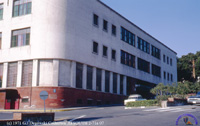
1. Bldg "D" |
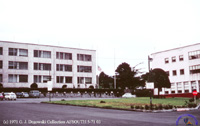
2. Retreat |
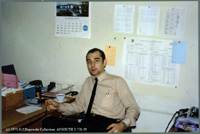
3. Document Control |
|
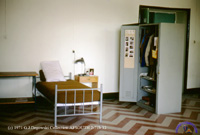
4. Billets |
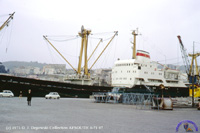
5. Soviet trawler |
|
|
|
|
 |
| |
| LANDSOUTH |
|
| 1951-1999 |
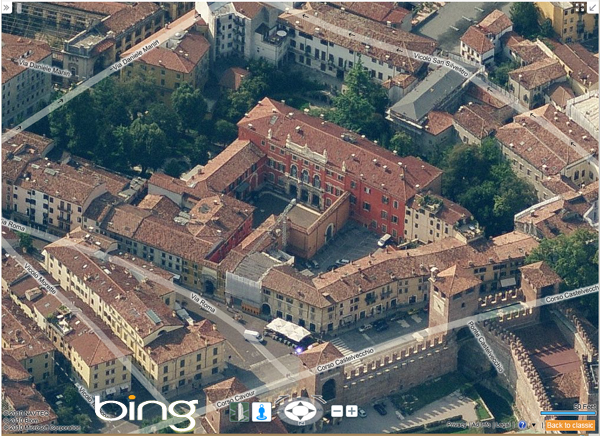
Bird's Eye View of HQ LANDSOUTH, Verona |
|
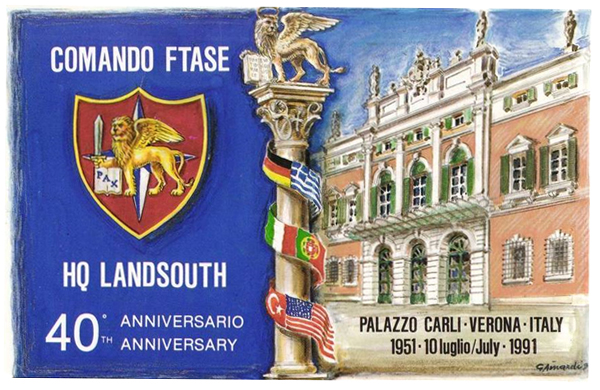
Postcard issued on occasion of 40th Anniversary of HQ LANDSOUTH, 1991 |
| |
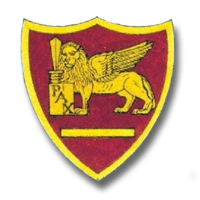 LANDSOUTH Inisgnia LANDSOUTH Inisgnia |
| |
| (Source: LANDSOUTH, Italian language Wikipedia, accessed Nov 2010) |
The LANDSOUTH command was activated on July 10, 1951 and had three Italian Army corps (III, IV and V IT Corps) as well as US Army elements stationed in northern Italy.
Commander of LANDSOUTH was a four-star Italian Army general. G-4 Division was headed up by a US Army brigadier general. |
|
| |
| (Source: NATO Fact Sheet - LANDSOUTH, 2003) |
LANDSOUTH is one of the five Principal Subordinate Commands (PSCs) under the Commander in Chief, Allied Forces Southern Europe (CINCSOUTH). The commander of LANDSOUTH, (COMLANDSOUTH) is an Italian four-star general. His headquarters is located in Verona, Italy, in the historic Palazzo Carli, where the agreement for the release of the city of Verona from Austria to Italy was signed in 1866.
COMLANDSOUTH's traditional mission is to promote the preparedness of NATO Land Forces made available for the defence of its Area of Responsiblity; to prepare defence planning for the Italian Theatre under his jurisdiction; to plan and conduct Theatre level NATO Exercises for the training of earmarked forces; and to conduct war operations in emergency in accordance with the CINCSOUTH's plans.
The Area of Responsibility includes the entire Italian peninsula and the islands of Sicily and Sardinia.
Traditional operational objectives are to promote all necessary measures for efficient Command and Control of assigned NATO forces; to organise training and employment of ACE Reaction Forces, Portuguese, Spanish and USA reinforcement units and other Allied units; to prepare and conduct Partnership for Peace (PfP) activities including exercises, workshops, seminars and visits.
In addition to the traditioal main mission of preserving the Italian territory integrity, other important tasks have been assigned to COMLANDSOUTH.
|
|
|
| 2004 |
After 53 years in the city of Verona, Joint Command South (JCS) will close its doors on 15 June (2004).
A few years after the end of the Second World War, at a time of intense and productive reconstruction in which the Armed Forces were also involved, a designated Army Headquarters was established in Verona with the task of carrying out studies, drawing up plans and making preparations for the defence of the North East Italian Theatre.
Many of the city’s buildings were suggested as fitting locations for the new Headquarters: eventually Palazzo Carli was chosen for its prestigious position and its military and historical associations.
At about the same time, at Fontainebleau (the first Headquarters of Allied Command Europe) General Dwight D. Eisenhower was gradually developing the idea that the High Command should drop its national features in favour of a more distinct NATO profile.
On 10 July 1951, this idea became reality when Headquarters Allied Land Forces Southern Europe (LANDSOUTH), under the command of General Maurizio Lazzaro de Castiglioni, came into being.
Landsouth, which was subordinate to Headquarters Allied Forces Southern Europe (AFSOUTH) in Naples, was responsible for land defence of the north-western portion of the ACE Southern Region.
In 1998 NATO announced the implementation of the new military command structure with activation on 1999.
On 1 September 1999 LANDSOUTH changed its name to Joint Command South (JC SOUTH).
|
|
| |
| WEST STAR BUNKER |
| |
The West Star bunker ("West Star" was the NATO codename for the bunker) was located near Affi, northwest of Verona, and served as the (static?) wartime headquarters for LANDSOUTH (and 5th ATAF?). Constructed between the years 1960-1966, the bunker was built into a mountain named "Monte Mascal" and could accomodate up to 500 military and civilian personnel in case of an emergency or war.
A communications center (around 30 NATO personnel) and a small group of civilian technicians who maintained the facility operated out of the bunker in peacetime.
Two other underground bunkers are mentioned in conjunction with LANDSOUT during the Cold War: a bunker (codename unknown) at Monte San Michele (near West Star) and a bunker near Grezzana (NATO codename "Back Yard").
An italian website (www.terrelibere.it) states that the Back Yard bunker served as an alternate wartime headquarters for LANDSOUTH/5ATAF.
Does anyone have additional details on these bunkers? . |
 |
|
| |
| LANDSOUTHEAST |
|
| |
|
| |
|
 |
|
| |
| AIRSOUTH History |
|
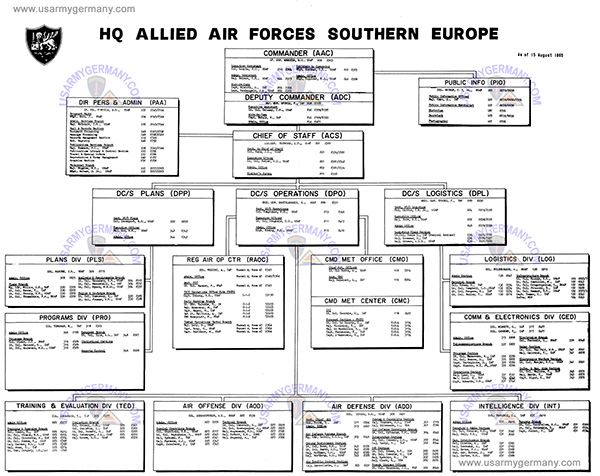
Wire diagram for HQ AIRSOUTH, August 1965 (Webmaster's collection)
|
|
|
 |
|
|
| Related
Links |
 |
|
ACE HIGH JOURNAL  - The ACE HIGH network in the AFSOUTH Region. A section of the very detailed ACE HIGH website by Roger Camperi and Gerrit Padberg. - The ACE HIGH network in the AFSOUTH Region. A section of the very detailed ACE HIGH website by Roger Camperi and Gerrit Padberg. |
|
| |
|
|
|
| |
|
|
|
|
|


 LANDSOUTH Inisgnia
LANDSOUTH Inisgnia